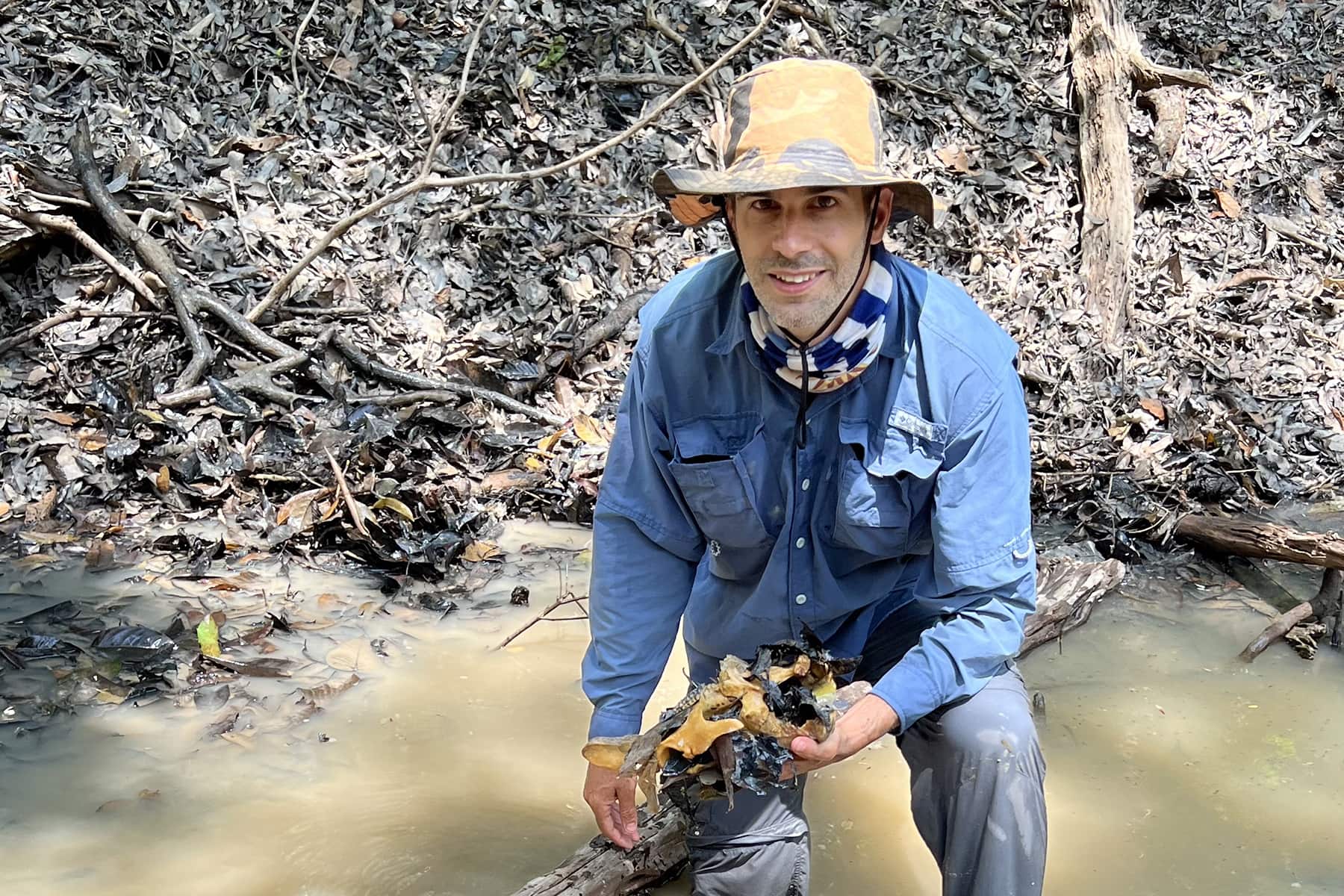
Daniel Gonzalez-Socoloske, professor of biology at Andrews University, Fulbright scholar, and National Geographic explorer, recently completed an extended research trip to the Amazon Basin of Brazil, where he studied alternative detection techniques for Amazonian manatees.
Gonzalez-Socoloske, who specializes in mammal ecology and conservation, spent five months at several locations along the Amazon, analyzing species interactions and participating in preservation efforts.
“I’m specifically interested in how species are adapted to the various environments that they live in and how they modify those adaptations when there are human-induced changes to those environments,” he said. “One of the principal aspects of understanding species ecology is to know where they are and how many there are. Some of these basic questions are really challenging with certain species. Manatees can be very cryptic, particularly Amazonian manatees, where their habitat is almost entirely dark water. This makes studying them really, really difficult.”
In 2020, Gonzalez-Socoloske was awarded a Fulbright U.S. Scholar Program award for his research project, “Can Sonar Technology Aid in the Detection and Monitoring of the Vulnerable Amazonian Manatee?” In 2022, he became a National Geographic Scholar, receiving a grant to fund the updated project, “Surveying Sirenians with Sonar: Using Modern Technology and Traditional Knowledge to Count Amazonian Manatees.”
“It was a huge honor,” he said. “They’re both related to my sabbatical period, where I was able to go to Brazil and spend an extended period of time working on this specific project.”
Gonzalez-Socoloske traveled to the research location in May 2022, where he met and collaborated with several other researchers, including Miriam Marmontel, specialist in Brazilian aquatic mammals; Gordon Hastie, principal research fellow at the University of St. Andrews, Scotland; and Jason Gulley, geologist at South Florida University and professional freelance photographer. Over the span of his stay, Gonzalez-Socoloske also incorporated local hunters in the team as an alternative manatee detection form.
In past research projects, Gonzalez-Socoloske has experimented with side-scan sonar for manatee detection, but this new project utilized a new kind of device: multibeam sonar. “It’s much more expensive, more technical, but allows us to detect movement. Now we’re seeing a video rather than a still image, which changes the game entirely,” he said. “I was able to capture the first recordings of Amazonian manatees swimming in their natural environment. We’re really excited about that journey.” The advanced technology operates at frequencies well above the hearing range of the animals, keeping them safe, and opens up the possibility of studying interactions between the manatees and their environments.
With this new strategy, Gonzalez-Socoloske and his team are able to manually detect manatees in both semi-captive and purely wild habitats. The next step of their project involves creating an algorithm that can register manatee signatures, so that the collected data can be analyzed through an auto-detection feature. The algorithm will be based on an existing program created at the University of St. Andrews that is currently used to identify seals. Once that has been completed, Gonzalez-Socoloske said, “to scale this up, the idea is to have multiples of the sonar setup in key locations where we know animals are coming through at a particular time in their life cycle. We can take advantage of that to try to count them.”
Species protection efforts rely on the creation of a standardized quantification system — something that does not yet exist for the Amazonian manatee. “We can’t protect something when we cannot ultimately say that their numbers are decreasing or stable or increasing,” Gonzalez-Socoloske said. The findings from this project are the first stage in creating a standard system and setting up official measures for their protection. He added, “It’s a huge step forward in terms of the conservation of the species, because it will start giving us a clearer picture of how many there are. It provides managers with a tool to address populational changes in real time.”
Gonzalez-Socoloske’s research efforts continue. During spring break this year, he led a group of biology students on an academic trip in Florida. While there, he remotely gave the keynote address at the Michigan Academy of Science, Arts, and Letter conference, which was held on the campus of Andrews University this year.
The original version of this story was posted by Andrews University.